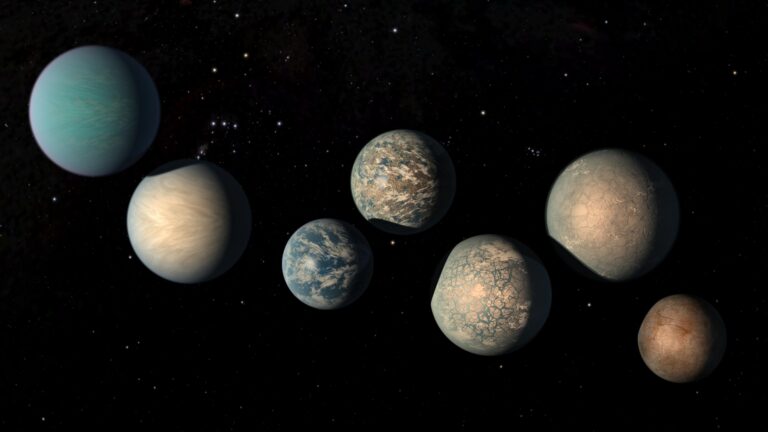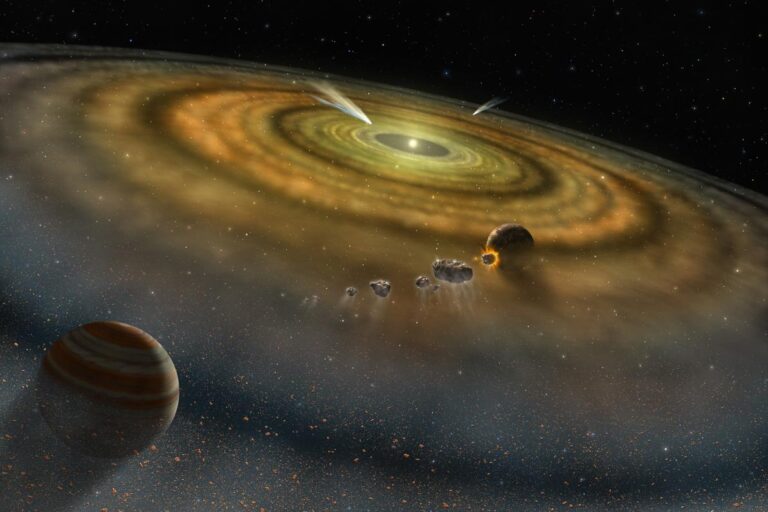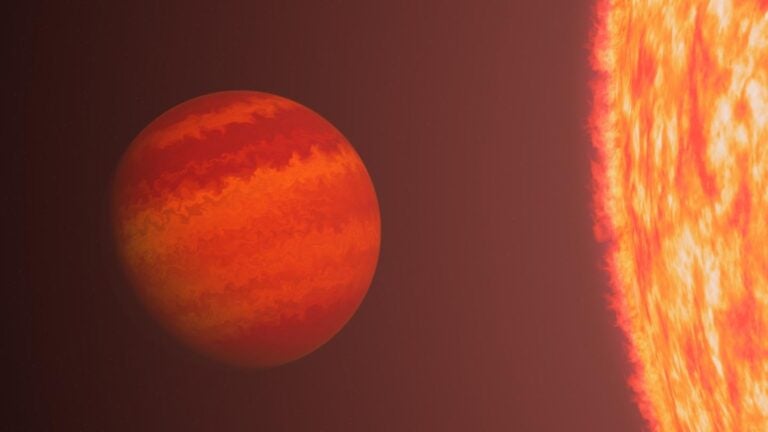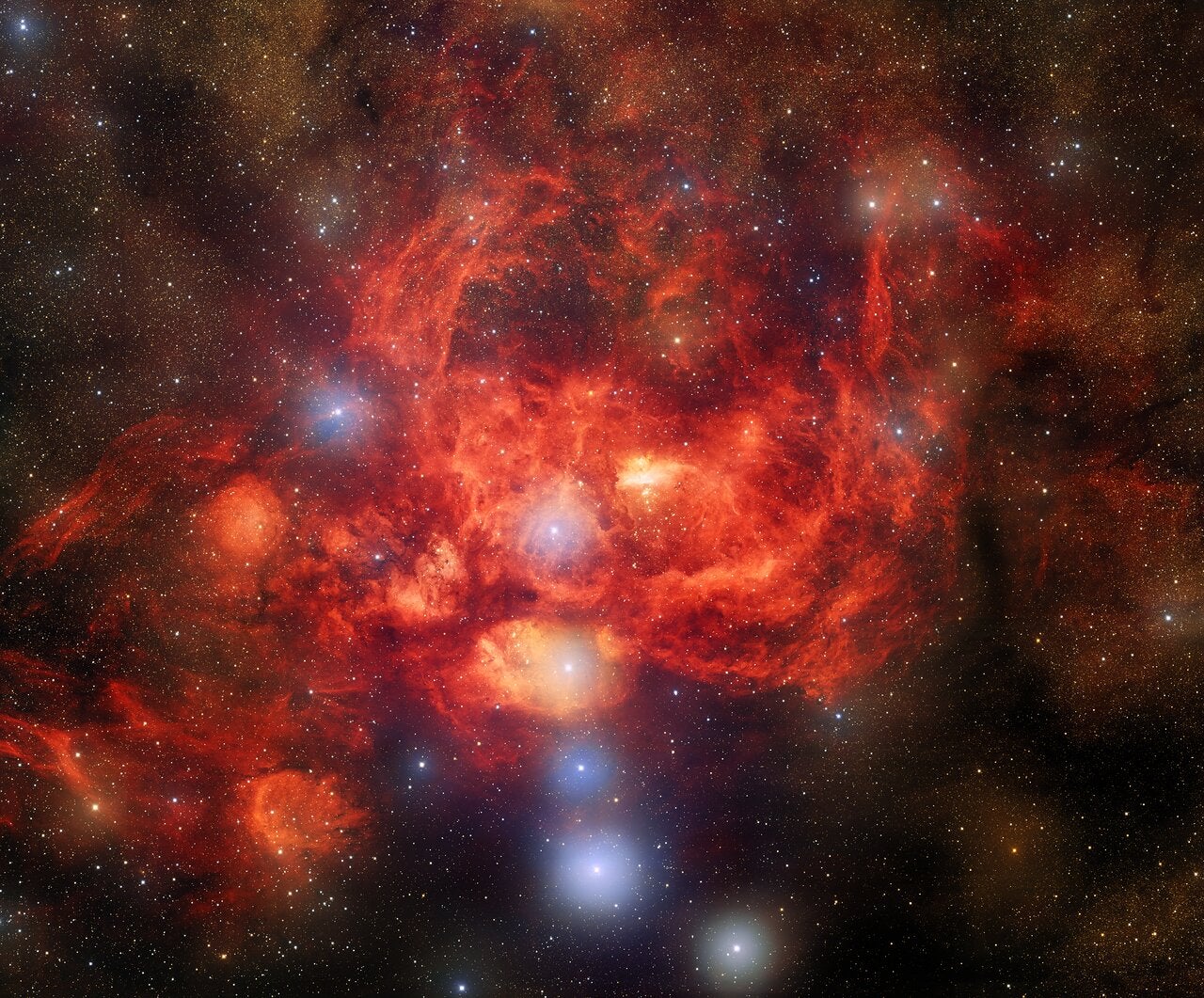
The Lobster Nebula, also known as NGC 6357, is teeming with massive stars that have carved and sculpted the nebula’s wisps of gas and dust. Located around 5,500 light-years from Earth in the constellation Scorpius, the nebula is one of the youngest and closest massive star-forming regions. It famously contains some of the most massive stars in the Milky Way Galaxy, nestled within a cluster dubbed Pismis 24.
New observations from the James Webb Space Telescope (JWST) focus on one of Pismis 24’s residents, a young Sun-like star swathed in a dusty protoplanetary disk from which planets may eventually form. This particular star sits near a pair of massive, bright stars that blast the region with ultraviolet (UV) radiation, a common occurrence in massive clusters.
The work was published Nov. 30 in The Astrophysical Journal Letters. It is the first time the effects of external radiation on protoplanetary disks has been studied in massive star-forming regions. Despite the punishing and chaotic environment, researchers found that the inner regions of this particular disk, dubbed XUE 1, don’t seem that different from the disks around stars in calmer, lower-mass star-forming regions. The similarity indicates that rocky planets can form even in challenging surroundings. The find can now give further clues into the types of environments in which rocky planets can form.
“This result is unexpected and exciting! It shows that there are favorable conditions to form Earth-like planets and the ingredients for life even in the harshest environments in our galaxy,” said María Claudia Ramírez-Tannus, the study’s first author and an astronomer at the Max Planck Institute for Astronomy in Germany, in a press release.
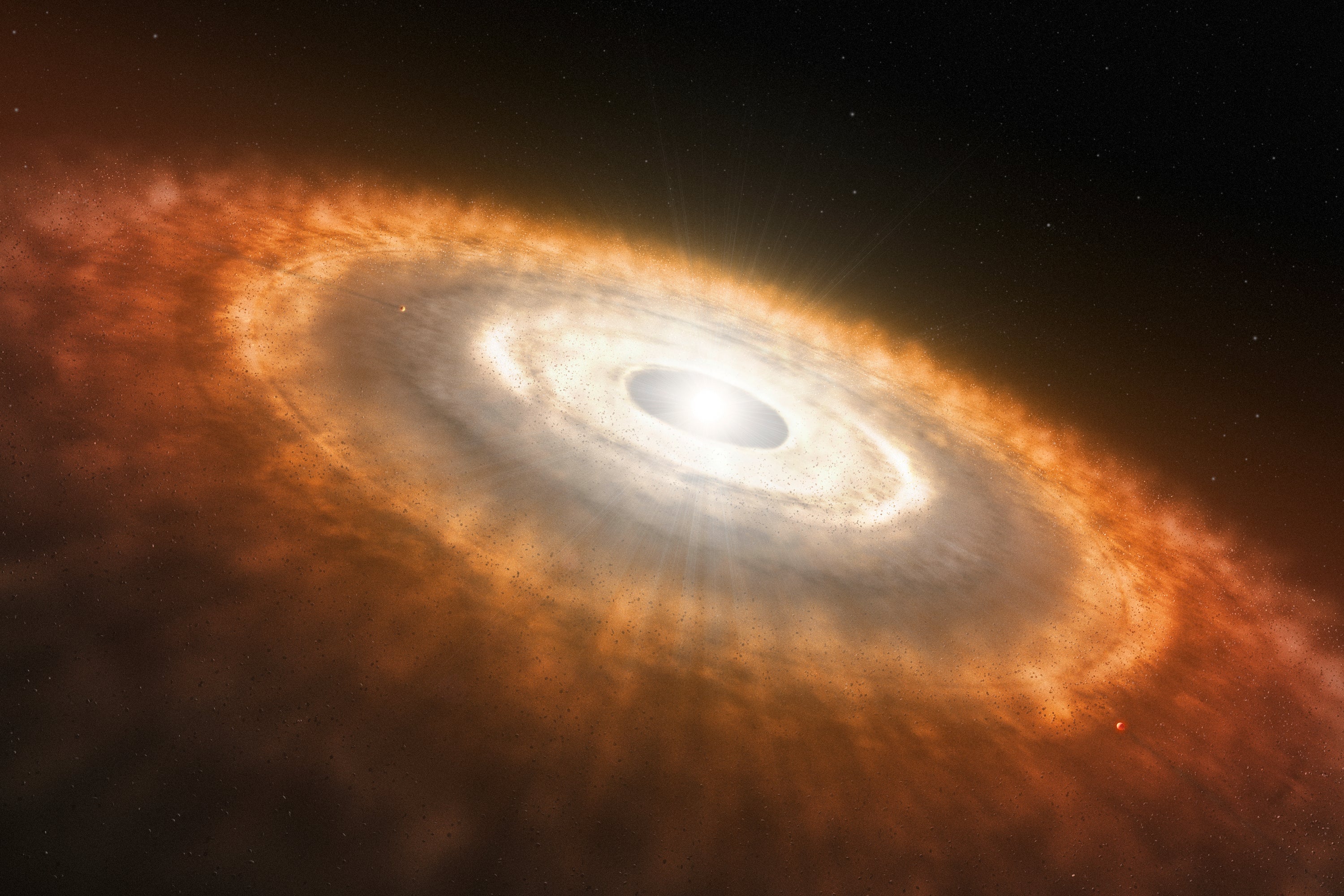
Analyzing more disks
JWST’s powerful Mid-Infrared Instrument allows scientists to peer into the inner regions of XUE 1 and catalog the molecules and environmental conditions there. Because UV radiation can break molecules apart, researchers weren’t sure whether the building blocks of rocky planets could survive. But MIRI observations detected water, carbon monoxide, carbon dioxide, acetylene, hydrogen cyanide, and crystalline silicate dust in XUE 1. Not only was it the first time such molecules had been seen in conditions like those in the star cluster, but crystalline silicate dust in particular is a fundamental necessity for forming rocky, Earth-like worlds.
The observations are part of JWST’s eXtreme UItraviolet Environments (XUE) program, which studies planet-forming disks in massive star-forming regions. JWST actually observed 15 protoplanetary disks in the Lobster Nebula. “If intense radiation hampers the conditions for planet formation in the inner regions of protoplanetary disks, NGC 6357 is where we should see the effect”, said study co-author Arjan Bik at Stockholm University.
Astrophysicists will continue to study the other disks to look for evidence of water and other essential planetary building blocks. They aren’t yet sure whether XUE 1 is a commonplace example or a rare fluke. The team also wants to explore whether terrestrial planet formation is more common in more or less massive star-forming regions.
“XUE 1 shows us that the conditions to form rocky planets are there, so the next step is to check how common that is,’ said Ramírez-Tannus. “We will observe other disks in the same region to determine the frequency with which these conditions can be observed.”




